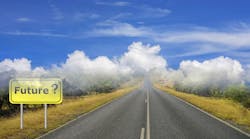By Kim Rooprai, BSc
As we followed the news about the spread of the novel coronavirus, the overwhelmed health-care systems in China, Italy, and Spain, and the rapid climb of COVID-19 deaths worldwide, our lives seemed to change overnight. As a dental student, little did I realize that the last week at dental school before spring break would be my last for a while.
When the World Health Organization declared the pandemic a global emergency, the response was to economically and socially lock down countries. The measures heightened the sense that our day-to-day lives had become surreal. For instance, in New York where I live and attend school, Mayor Bill de Blasio placed numerous limits on gatherings, and ordered churches, synagogues, mosques, schools, shopping malls, barber shops, restaurants, gyms, casinos, and many other sites and institutions to close.
A second announcement declared that nonessential workers were to remain at home.
The rationale for these physical distancing measures was to slow the spread of disease, buy time until effective treatment and prevention regimens were available, and bring to manageable levels the expected surge of seriously ill coronavirus patients in order to lessen the burden on the health-care system. But what it also did was change people’s routines in ways we could not have imagined, especially in dentistry.
In a highly collaborative field involving close patient contact such as dentistry, where the risks of infection are high, stopping the spread of the coronavirus has been especially challenging. Strict guidelines have been put in place. At first, it was suggested that all elective or routine aerosol-generating dental care be suspended. Then, most dental professionals treated only emergencies. These tactics were designed to mitigate the spread of coronavirus, conserve and redirect personal protective equipment (PPE) to hospitals, and aid in flattening the curve and reducing the surge of pandemic patients to overburdened emergency departments. Practicing dentists, recent dental graduates, and dental students, while abiding by these guidelines to reduce the transmission of coronavirus, found themselves negotiating new and adaptive strategies in this uncertain environment.
Though we’re facing a historical trial comparable to the Spanish flu pandemic of 1918, we will find a path forward. On the educational side, dental students must optimize the unexpected large amounts of time at home to further our educational goals.
One approach is to take the opportunity to communicate with active leaders in dentistry as we attempt to piece together what our future will look like. One such leader is Chad P. Gehani, DDS, president of the American Dental Association. Dr. Gehani is a clinician and educator who is very involved in organized dentistry. Here are some thoughts Dr. Gehani offered regarding the future of the dental profession.
Kim Rooprai: What advice do you have for dental students who are being either trained remotely or entering the workforce in the near future?
Dr. Chad P. Gehani: Do not be dismayed by the current circumstances. I know this is a very difficult and confusing time. To dental students, I’ll say: you will encounter many rough patches personally and professionally, but you will survive. Work hard, stay focused, and keep the faith.
KR: What do you think dentistry will look like in the future?
Dr. Gehani: It’s hard to say just how things will be different, but we can take our hints from the past about the strength of our profession. Dentistry weathered the 1918 pandemic and the HIV/AIDS crisis, and we adapted. What we learned from times like those helped us create new technologies and strengthened how we approached infection control. Whatever the future holds, dentistry will be stronger and more unified than ever before.
KR: Moving forward, how do we create a safe environment for dentists and patients?
Dr. Gehani: Safety is always of the utmost concern, especially as dentists enter the new COVID-19 world. The ADA recently issued new interim guidelines on personal protective equipment (PPE), specifically masks and face shields, that will help dentists reenter practice while minimizing the risk of COVID-19 transmission. We also recently petitioned the US Department of Health and Human Services to issue federal guidance that enables dentists to administer point-of-care COVID-19 tests in their offices, again, as a measure to help minimize risk of disease transmission given that some people infected with COVID-19 are asymptomatic.
KR: How do you stay positive in a time of uncertainty?
Dr. Gehani: Perspective is the gift of experience, and as someone who has been a practicing dentist for more than 40 years, I have experienced many times of uncertainty. We all have to remember that this will pass, and we will all make it to the other side.
Our perspective fosters a positive attitude, which in turn allows us to better control the anxiety we feel about our uncertain future. It also means facing that uncertain future head-on, both in clinical as well as educational settings. For dental students and practicing clinicians, the head-on approach is to dedicate time to continuing education webinars, advocate oral health literacy through online platforms, and adhere to public health guidelines by treating emergency cases only. Finding a path forward will likely mean adjusting to modified infection control measures.
This crisis will influence changes in dentistry that will let us break the cycle of uncertainty and allow us to build a stronger profession.
KIM ROOPRAI, BSc, is a third-year dental student at NYU College of Dentistry. Her interests in dentistry include prosthodontics, esthetics, and implantology. Feel free to contact her at [email protected].
Editor's note: To view DentistryIQ's full coverage of the COVID-19 pandemic, including original news articles, video interviews with dental thought leaders, and tips for returning to work, visit the DentistryIQ COVID-19 Resource Center.






